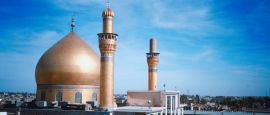Iraq Weather, climate and geography
Weather & climate
Summers are very hot and dry but cooler in the mountains in the north and east. Winters are mild with some rain in central and southern Iraq but cold in the north.
Long, loose clothing in natural fabrics is advised for summer months. Medium-weights are advised during the winter.
Modest dress is advised, especially for women - upper legs and arms, shoulders and cleavage should be covered. A headscarf can be useful for extra coverage, and is essential for visiting mosques.
In Iraqi Kurdistan dress for women is very western; in the towns in the north at least half of the women do not wear headscarves and wear western fashions though this does not include short skirts, shorts or obvious cleavage.
Geography
Iraq shares borders with Turkey, Iran, the Gulf of Oman, Kuwait, Saudi Arabia, Jordan and the Syrian Arab Republic. There is also a neutral zone between Iraq and Saudi Arabia administered jointly by the two countries. Iraq's portion covers 3,522 sq km (1,360 sq miles). The country's main topographical features are the two rivers, the Euphrates and the Tigris, which flow from the Turkish and Syrian Arab Republic borders in the north to the Gulf in the south. The northeast is mountainous, while the country in the west is arid desert. The land surrounding the two rivers is fertile plain, but the lack of effective irrigation has resulted in flooding and areas of marshland.
Do you have any Feedback about this page?
© 2026 Columbus Travel Media Ltd. All rights reserved. No part of this site may be reproduced without our written permission, click here for information on Columbus Content Solutions.




 You know where
You know where